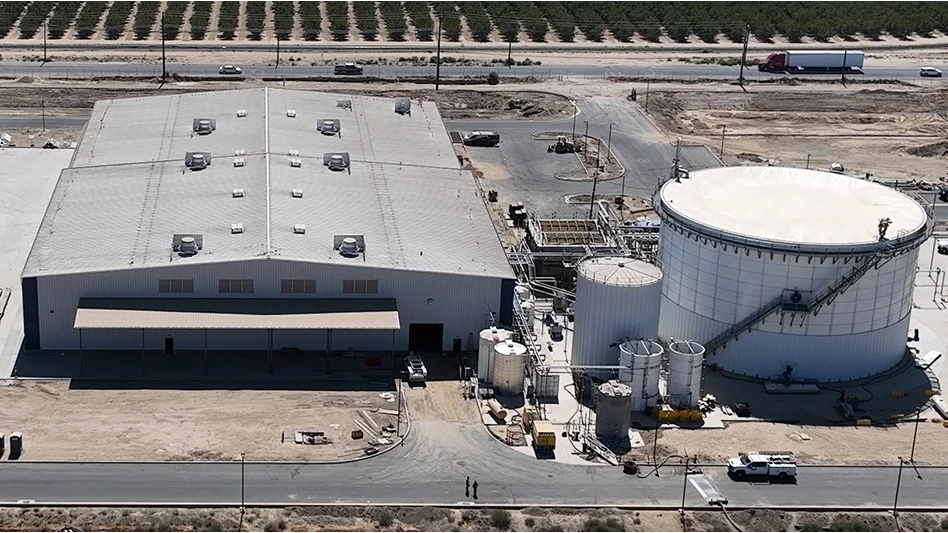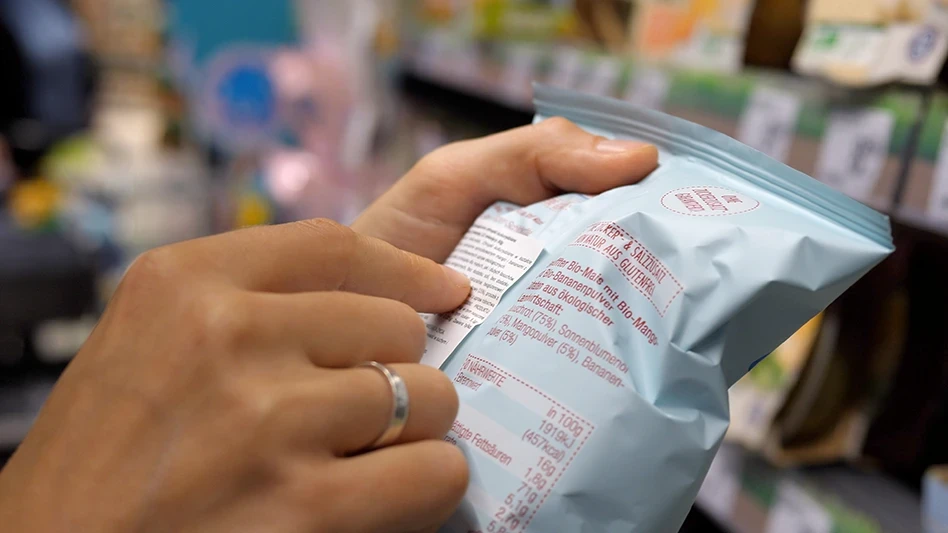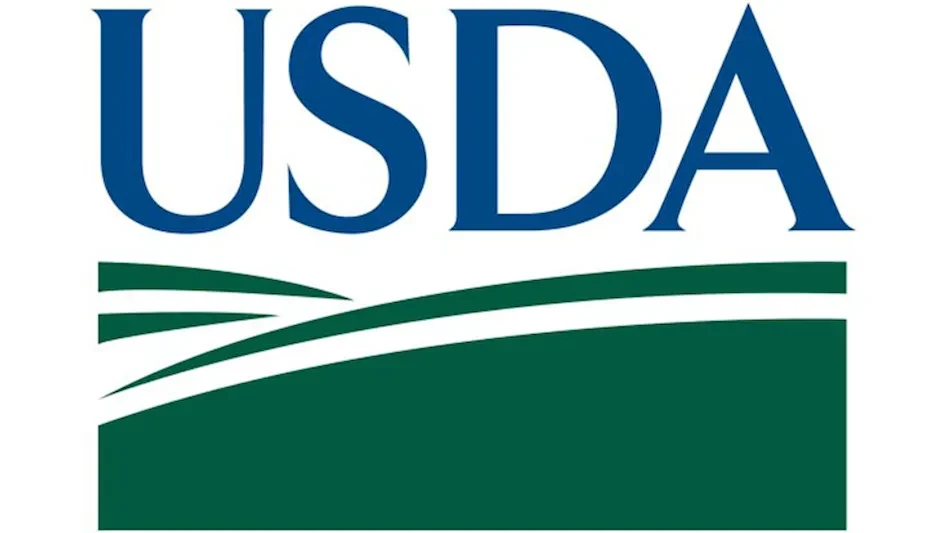
drakuliren; gallinago_media; taviphoto; stockphoto mania | Adobe Stock

Birds can be quite a pest around food facilities. They can cause a multitude of problems. Of course, they can eat, damage and contaminate products. Then there are all the diseases they carry, including Salmonella and E. coli. Their feces can also be tracked into the site on employees’ shoes, and heavy deposits can cause histoplasmosis. Not to mention the ectoparasites like lice and mites that birds carry. So, let’s get our ducks in a row and manage these pests.
The Migratory Bird Treaty of 1918 prohibits “the take (including killing, capturing, selling, trading and transport) of protected migratory bird species without prior authorization by the Department of Interior U.S. Fish and Wildlife Service.” It would be faster to list the birds that are not protected, because the majority of birds in North America fall under the protection of this treaty. Some of the most common birds seen around food facilities are pigeons, sparrows, starlings and geese. Many other birds may be bothering your facility. This is why identification is important: You don’t want that albatross around your neck if you target the wrong birds; you will not rise like a phoenix from the repercussions.
Let’s Talk Turkey.
By the time a bird gets into your site, you are on the offensive. That bird has to come out as soon as possible for all the above stated reasons and the shutdown time it is costing the site. (Time is money!) You don’t want to go on a wild goose chase: You want a fast and effective solution. There are a few options for removal depending on the bird species.
The first is shutting off the lights and opening all the doors. Most often, the bird does not want to be in the facility, and showing it the exit could encourage it to fly out on its own. Mist nets can be used, particularly on smaller birds. These fine nets need to be placed in the flight path of the bird to catch it quickly. Once the bird is caught, you need to carefully detangle it from the fine mesh and release it. Then there are the lethal options (aka shooting it). Don’t be crazy as a loon; hire a professional if this is the chosen course of action.
It must be mentioned here that many people like birds. They have bird feeders at home, enjoy birdwatching and encourage birds to their property. Seeing birds harassed and potentially physically harmed distresses people. There have been facilities with bird feeders and birdhouses outside their front entrance! It’s wise to be careful and conscious when removing birds. It’s hard to be happy as a lark when the local news gets called and shows up on your property because you are being “mean” to the birds.

While we are speaking about professionals, whose job is bird management? No one gets to chicken out on this one; as with any pest, it is everyone’s responsibility. Even if you have a third party performing your regular pest management, there are so many things everyone at the facility can be doing to prevent birds from entering. The first is simple: Close the doors!
Think of how birds can get in. It’s typically through an open door. While that is the easiest answer, there may be other openings allowing birds to find their way in. Pay attention to any opening, and don’t forget the roof. Seal those openings. Not only will this prevent birds, it can also prevent rodents and other pests from gaining entry.
Your pest control team is also part of the solution. They should have an eagle eye and report conducive conditions so they can be fixed for better prevention. While your pest control team should be specifically inspecting for pests, everyone at the site can keep their eyes open for issues.
Clean Up.
Along with exclusion tactics, sanitation is important in arranging an anticipatory avian management plan. You can’t just wing it. Your inspection should look at all the food, water and shelter opportunities that are encouraging birds near the site. Food is an obvious sanitation issue. If there is material the birds can and want to feed on, they will be attracted to the buildings. This may be food the facility produces, spillage, waste products in dumpsters, insects drawn in or even water sources.
Sometimes these are easy to mitigate. Covering or closing dumpsters, reducing spillage and eliminating water sources can greatly reduce the attractiveness of the site. If birds aren’t attracted, they will go somewhere else for the needs they have. Knowing what species is ruffling your feathers means you can focus your efforts on their favorite food sources.
Sanitation also applies to bird habitat. With birds, that may be nesting habitat, resting or roosting habitat and feeding habitats. Different bird species will have different preferences on habitat, and to complicate matters more, it can be seasonal.
When sanitation isn’t completely possible, there are other means of deterring birds from coming into a site. Birds of a feather do like to flock together. With enough food resources, they will happily group together at a feeding site. Same with habitats. Large trees, bushes, sheltered ledges, window sills and more can provide roosting and nesting habitats. Just like eliminating all the food, eliminating all the habitats is not completely possible, but they can be significantly reduced.
Particularly around buildings, make sure trees are trimmed away so they aren’t touching the structure. Eliminate large, overgrown areas so birds have less shelter. The more exposed they are, the more likely they are to go elsewhere for their shelter. Keeping vegetation trimmed back and away from buildings can also reduce the rodent and insect population. Birds may be feeding on fruits and seeds plants produce, and some are feeding on insects at least periodically throughout the year. This can further deter them.
Consider This.
It would be nice to think that sanitation and exclusion alone are enough to keep birds and all the detriments that come with them away from sites. You will likely have to spread your wings and incorporate additional deterrents. There are many products for preventing birds. Again, this depends on bird species. Each one will be a little different and need slightly different methods. It also helps to have a bird’s-eye view of the situation: Look to see where they are flying, landing, roosting and nesting. It’s often up high. That will also help to determine the most effective products to use. Here are a few to consider:
- Scare devices: You may get goose bumps when you are scared, but birds will take wing and vacate when they sense danger. There are visual scare devices that look like a predator or a flashing light or a large eye. Some scare devices employ sounds like the call of a predator or a very loud noise. There are even professionals that will come with their dogs or their birds of prey to scare birds from the site. Just like watching the same scary movie a dozen times, birds will learn to anticipate the scares if they are not changed consistently. A perfect example: How many times have you seen a plastic owl that is either covered in bird poop or has a bird sitting on top of it? That device is no longer doing its intended job because the birds have learned it is no threat.
- Physical deterrents: Preventing birds from utilizing a landing, roosting or nesting site will also have them seeking sanctuary at other sites. Their goose is cooked if they can’t physically get to a space to land, build a nest, attract a mate and lay eggs. There are different types of spikes, wires, rotating devices and more that prevent birds from their landing and resting spaces. These are most often installed on building ledges, roof edges, flat roofs and other areas that can protect birds. Remember that birds are relatively small and like to be protected by overhangs, dense vegetation and niches where their backs can be up against a solid surface. Installing the right device for the bird species in the right place is key to having these work properly. A perfect example: How many times have you seen a bird build its nest on top of a set of bird spikes? Instead of making the area inhospitable, the wrong-sized spikes provided a perfect spot for a nest for another species.
- Total exclusion: One of the best ways of keeping birds out is to use netting to completely exclude an area. The birds can’t rule the roost if they can’t access the roost. High-quality bird netting, when installed correctly, will keep birds entirely out. It is important to ensure all birds and their young are out of the area before installing bird netting. If fledglings are still in the nest, the parents will do whatever they can to break, destroy or find openings in the netting to get to their babies. Netting also has to be carefully installed so there are no openings, especially up against the walls it is attached to. If there are, the birds will find their way back in. All that being said, bird netting is very effective at keeping birds totally out of a particular area and can be tailored to almost any size or shape.
- Trapping: There are a few traps available for certain bird species. As with any control method, this has to be employed very carefully in targeted areas. Since it will be trapping live birds, it must be constantly checked — at least daily. Then, those birds have to be taken off site and dealt with in an appropriate way. It may also require a wildlife trapping permit. This method can be disturbing to employees who see trapped birds.
- Treatments: There are a few products that can be used on birds. A repellent spray made from grape seed extract can be used in many areas, such as vegetation, lawns and other spaces birds are roosting. This is not very effective on birds that have already formed nests. It is also temporary — weather conditions will deteriorate it over time, and it will need to be reapplied. There are also baits that work as an oral toxicant to frighten birds. Grain is treated with the chemical and once eaten affects the birds’ central nervous systems. It is not intended to kill, but the affected birds will essentially scare other birds away with their erratic actions. This is a restricted-use product, so it must be applied by a licensed professional.
- Birth control: If pigeons are the problem, there is an ingestible product that prevents them from producing viable eggs. They can still be proud as a peacock, it just won’t help them to successfully reproduce. Since this is a bait, it’s feeding the birds and attracts them in to a degree. Individual pigeons that feed on it will be affected, but there are still birds that will consistently fly in from other areas that have not been affected. So, this will reduce populations but never fully eliminate them.
Birds are pests just like insects and rodents. As with all pests, an integrated approach using all the tools available is the best method. Everyone can help with control by keeping doors shut, cleaning up, containing foods and reporting any issues. Don’t be a sitting duck and wait for problems to occur. Work with the pest management team to prevent bird issues so there is less chance of birds getting inside and wreaking havoc on your bottom line.

Explore the January February 2023 Issue
Check out more from this issue and find your next story to read.
Latest from Quality Assurance & Food Safety
- IFT Celebrates Inaugural Section Impact Award Winners for Volunteering Excellence in Food Science Community
- Ron Simon and Associates Files E. coli Lawsuit Against Grimmway Farms of California
- Boar's Head Launches New Resource Detailing Company's Food Safety Standards and Protocols
- FSIS to Host Virtual Public Meetings on Salmonella Framework
- Climate-Smart Soybeans Enter U.S. Market
- Yoran Imaging Introduces Thermal Imaging-Enabled System for Induction Seal Inspection and Analysis
- GDT Highlights Food Safety Solutions for Food Processing and Packaging Facilities
- FSIS Issues Public Health Alert for Ineligible Beef Tallow Products Imported from Mexico





